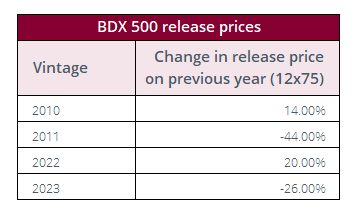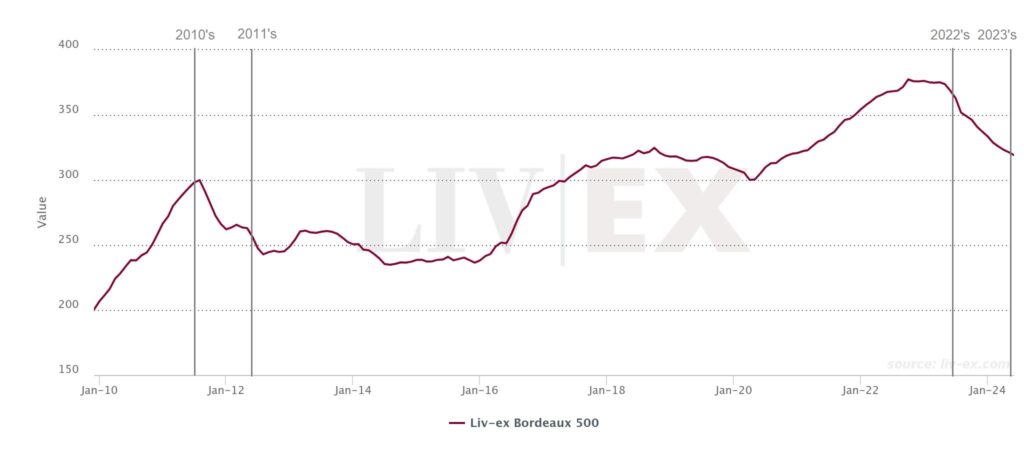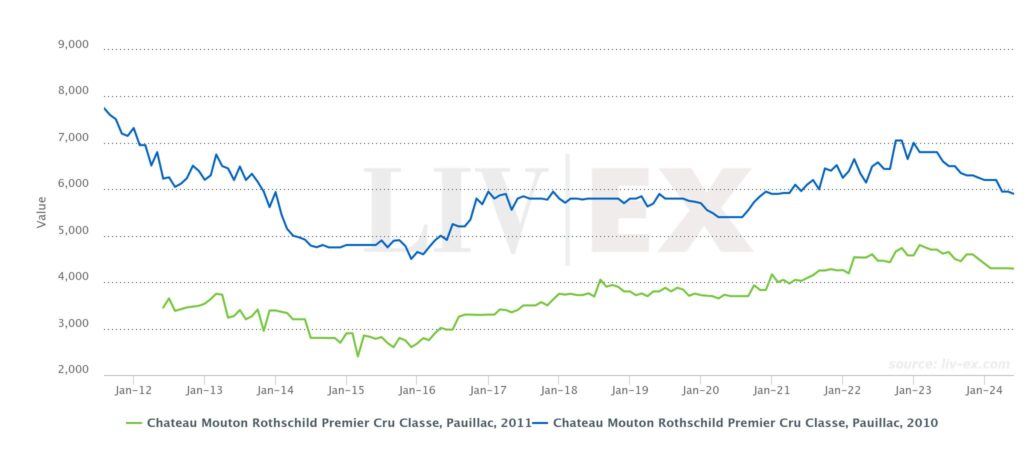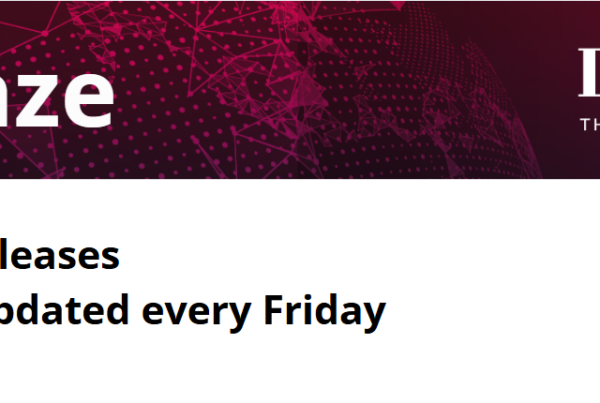What’s happening in the market?
Following a slow week of Bordeaux En Primeur releases, Burgundy and Champagne led trade over the weekend, taking 33.1% and 32.4% of traded value respectively. Champagne was buoyed by trades of Louis Roederer, Cristal 2015 and Dom Perignon 2013, while Burgundy saw trades of several vintages and cuvees from Domaine de la Romanee-Conti.
Sassicaia (across multiple vintages) has also featured this week.
Today’s deep dive: The market in the wake of great vintages – 2023 vs. 2011
While critics generally agree that the 2023 vintage has yielded some successful wines, high scores were not awarded across the board. It follows 2022, a vintage acclaimed for its homogenous high quality yet criticised for its similarly homogenous high prices.
In today’s deep dive, we examine how the market has responded over time to one critically acclaimed Bordeaux vintage vis-a-vis its immediate successor.
The 2010 vintage, widely considered to be excellent, was released at even higher prices than the 2009s (declared by Parker to be the greatest Bordeaux vintage he had ever tasted) and proved to be a step too far for the market. Soon after, the market declined sharply. The 2011 vintage was not considered as great as either 2009 or 2010 and was released into a market heading south. Release prices thus came down considerably; not dissimilar to the current scenario being played out between the 2022 and 2023 releases.
The table below shows aggregate year on year changes in international release prices for the 2010, 2011, 2022 and 2023 vintages of the wines in the Bordeaux 500.
*Not all components of the index have yet been released for the 2023 vintage, hence the figure reflects the average percent change for those that have been (31/50).
Market conditions at the time of the 2010 and 2011 releases were similar to those we see today. The chart below highlights release times, contextualised by the Bordeaux 500.
Taking components of the Bordeaux 500 index for the 2010 and 2011 vintages, we can examine how each has fared in the market since their respective releases.
Consistently, the 2011 vintage sits higher on the index than the 2010, indicating greater percentage increases in value. Currently, the 2011 is up 53.1% since its release, while the 2010 is up 16.2%. In many cases – particularly amongst the First Growths — the current Market Prices of the 2010s sit below their original release prices. The steepest drop in prices of the 2010s occurred during the first three years after their En Primeur releases. By contrast, prices of the 2011s decreased more steadily after release.
As an example, we may look at prices of Château Mouton Rothschild, the top traded 2010 Bordeaux wine so far this year. With a Market Price of £5,900 per 12×75, it has decreased in value by 23.9% since its original release at £7,750. Conversely, the 2011, since its original release at £3,770, has increased in value by 13.8%. The chart below presents a more complete picture of how and when those price movements occurred.
With high volumes of the 2010 released into a downward-moving market, prices quickly fell as négociants and merchants tried to unload stock they’d bought at the peak. Eventually, prices stabilised and fell into sync with general movement in the market. Significant cuts on the 2011 release prices may have prevented prices from falling too sharply as the market found its floor. As a result, those who bought 2011 En Primeur have seen good returns on their investments, whereas those who bought 2010 En Primeur have not.
The question remains whether the 2023s are priced low enough to perform similarly to the 2011s. Where release prices of the 2011s were cut by over 40%, the 2023s have seen decreases closer, on average, to 25%. Will this be enough to ensure investors in 2023 En Primeur see positive returns within the next 5 years?
Our Bordeaux En Primeur 2023 page contains everything you need to know about this year’s campaign. You can also sign up for our daily En Primeur email alerts using the form below.
Liv-ex analysis is drawn from the world’s most comprehensive database of fine wine prices. The data reflects the real time activity of Liv-ex’s 620+ merchant members from across the globe. Together they represent the largest pool of liquidity in the world – currently £100m of bids and offers across 20,000 wines.








